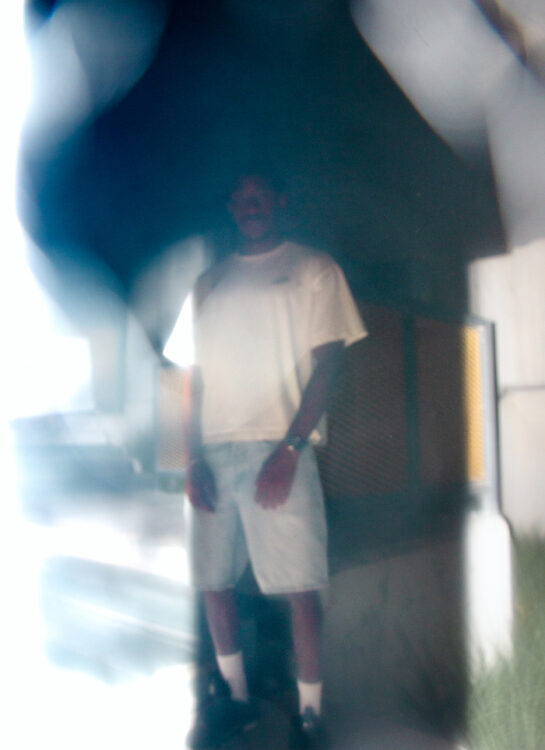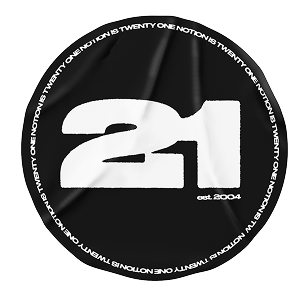- Words Millie Dunn-Christensen
Producer, engineer and artist Trigga talks carving out his sound, growing up in south London and the brotherhood that is, Last Night in Paris.
Few creatives manage to stay as versatile – and as true to their roots – as Trigga. A multi-talented producer, engineer, songwriter, A&R, and sound designer from south London, he has carved out a unique sonic identity that blends emotional depth with gritty edge. Whether he’s crafting melodies in the studio, designing sound for global brands like Adidas and Aston Martin, or collaborating with artists from Yungen to Zlatan, Trigga’s fingerprint is always unmistakable.
What sets Trigga apart isn’t just his wide-ranging skill set, it’s how he seamlessly shifts between roles, blending production and engineering as if they were one. Born into a rich musical environment, Trigga absorbed influences from every corner of his upbringing. Those early days in south London instilled a collaborative spirit that continues to fuel his work, both independently and through collectives like the cult-followed Last Night In Paris.
We sat down with him to dive into his mind, exploring the philosophy behind his cross-genre creations, the importance of authenticity, and where he’s taking the Trigga next. Whether you know him from the Treehouse days or a high-gloss campaign soundtrack, one thing is clear: Trigga isn’t just making music – he’s building a legacy.


You’re a true multi-hyphenate: producer, engineer, songwriter, A&R, and sound designer. What role do you feel most creatively at home?
I’d say producing and engineering feel the most like second nature to me, not just because I’ve been doing them the longest, but because they go hand in hand. Like, when you’re producing, you’re already thinking like an engineer, EQing, balancing sounds, etc. They blend into one process for me. Songwriting, on the other hand, has always pushed me the most. I enjoy it, but it doesn’t come as naturally. Melodies usually hit me first before the actual words do. It’s a fun challenge though, keeps me on my toes creatively.
Growing up in south London, how did your environment shape your sonic palette and how much of that is still present in your work today?
Growing up where I’m from, most kids either wanted to play football or make music, so I was always surrounded by people with a real musical ear. As we got older, we all started experimenting more, trying to create our own sound based on everything we grew up hearing. That’s where it gets interesting, you start pulling different elements from different moments in your life. Like those Sunday mornings when my mum would be playing her old-school songs, or even just chilling out with friends. All those little moments shape how I hear music now.
You’ve worked with a range of artists, from Youngsta CPT to Yungen, to global names like Zlatan and Obladaet. What’s your approach to building chemistry with an artist?
Whenever I’m working with an artist, I always start by listening and trying to understand their music and how they see things creatively. That comes first, before anything technical. If I’m engineering, I’ll take time to learn how they like to record, whether it’s in 4bar takes, running the whole thing in one go, doing loads of takes, whatever works for them. On the production side, I’ll usually ask about the BPMs they vibe with, keys they’re comfortable in, and little details like that. It’s always way easier to create once you understand how someone works. It’s also important they feel comfortable with you. That trust is what lets you push creative boundaries and maybe even show them a vision that’s a little outside their usual sound but still true to them.


In your own work, you’re not just producing but also performing. How does stepping into the spotlight change your relationship with the music?
I’ve always preferred producing, but I do like to jump in and hit a few notes or melodies here and there. It makes me feel more involved in the process, like I’m adding a little extra layer to the track.
Do you approach creating for a fashion or ad campaign differently than when you’re in the studio with an artist? What does the creative freedom look like in each space?
Definitely. When you’re in the room with an artist, it’s more like a blank canvas. You’re both just bouncing ideas, pulling inspiration from whatever you’re talking about. It’s super fluid and free. But when it comes to creating music or sound design for adverts, it’s a bit different. You’ve already got visuals or a concept in front of you from the jump, so your inspiration comes more from the movement in the visuals or the mood and colour of the pitch deck. You’re building around something that already exists, which is a fun challenge in itself matching the energy of what’s there while still adding your own touch.
You’ve been part of Last Night in Paris: a collective with a real cult following. How has that collaborative DNA influenced how you work today, both independently and with others?
Being part of LNIP was deeper than just working on music or art together, it’s a brotherhood. We move like a family, so creating together came naturally. Everyone has their own vibe and way of doing things, but we knew how to bounce off each other because we genuinely understood one another. That experience definitely stuck with me. It made it way easier to work with new people because I’ve already learnt how to navigate different personalities and creative styles. Once you’ve built with your brothers like that, collaborating just becomes second nature.
What does cross-cultural collaboration mean to you creatively and how do you keep it authentic?
It means a lot, music really is a universal language. It connects people no matter where you are in the world. Being able to travel and create in different places has been huge for me. It sharpens your ear, opens up your perspective, and teaches you things you’d never pick up just staying in one place.I’ve learned so much just by sitting in on sessions abroad, watching how other people work, picking up little tricks, then bringing those ideas back into my own world. I always try to keep it authentic by respecting the sound and the roots of whatever genre or culture I’m tapping into, but I’ll still sprinkle in my own flavour so you can hear the Trigga in it too.
What’s a detail in your process that most people overlook, but is crucial to the way you work?
I’d say mixing. I like to mix as I produce or engineer because it makes the final mix easier later on. It also gets really intricate, sometimes it’s just little things I’ll change to make a sound clearer or more effective. Most people probably wouldn’t even notice those tiny tweaks, but it’s all about making sure I’m happy with the end product. It’s the little details that really bring it all together for me.
Your music balances emotion and edge-melodic hooks with a darker undertone. How intentional is that contrast for you?
It’s not something I overthink, it’s just the way the music naturally comes out when I’m creating. That contrast between emotion and edge has kind of become part of my sound over time. A lot of it was shaped during a period where I was locked in, making music every single day in this space we called the Treehouse at the back of my cousins garden. That’s really where I found my sound, just experimenting, letting ideas flow, and figuring out what felt true to me. The moodiness, the melodic hooks, the darker undertones, it’s not forced. It’s just the result of that space, that mindset, and that consistency during that time.
What does the next phase of “IAM.TRIGGA” look like? What’s still on your creative bucket list?
Movie scoring is definitely something I want to dive into. I’ve always been drawn to the musical and sound design side of film and how it can shape emotion and storytelling. That’s 100% on my to-do list. I also really want to curate an EP or album with a bunch of dope artists on beats I’ve made. The idea would be to get them trying different genres, stepping out of their usual world and jumping into mine. Just pushing creativity and seeing what comes from it. I think that could be something really special.
Finally, if someone heard your music for the first time. What track would you want them to start with, and why?
I’d have to say ‘SOIREE’ by LNIP. That was my first proper production and the first time I ever laid down a chorus, so it really feels like the start of the journey for me. Outside of that, any production/song I’ve done with Reezy Rye is a solid example of the real, authentic Trigga/Treehouse sound. That’s where you’ll hear the core of my style, no filters, just straight creativity.

